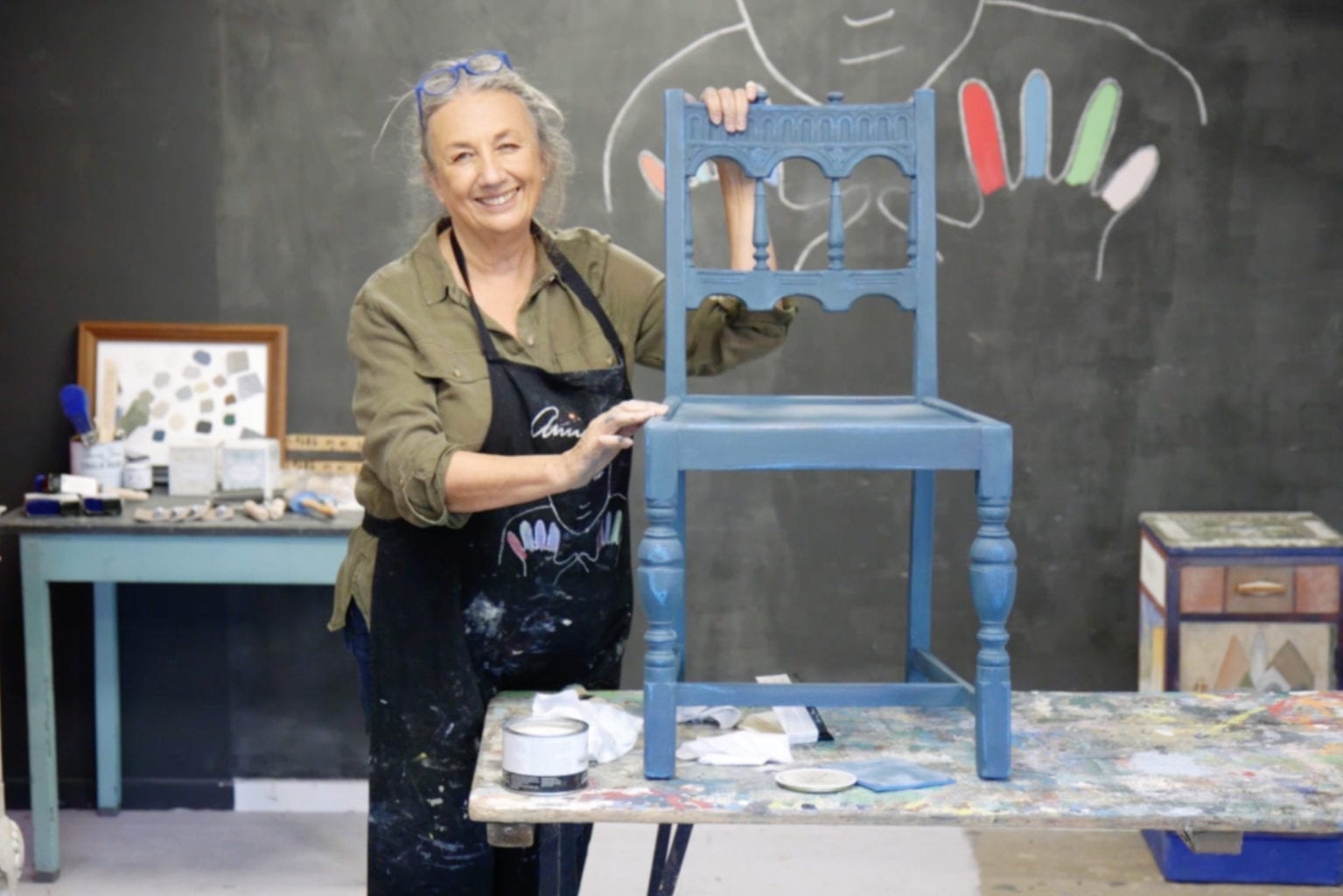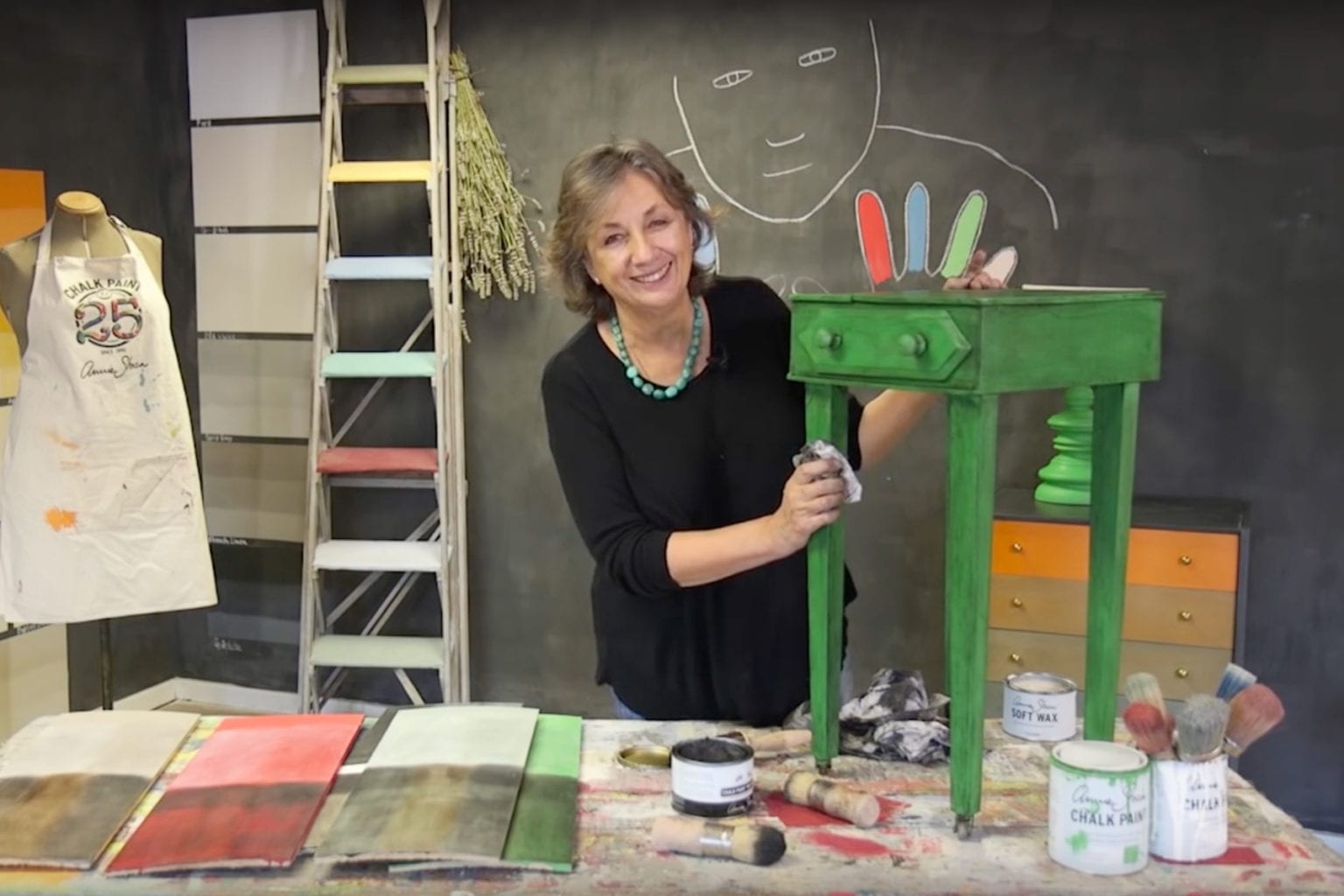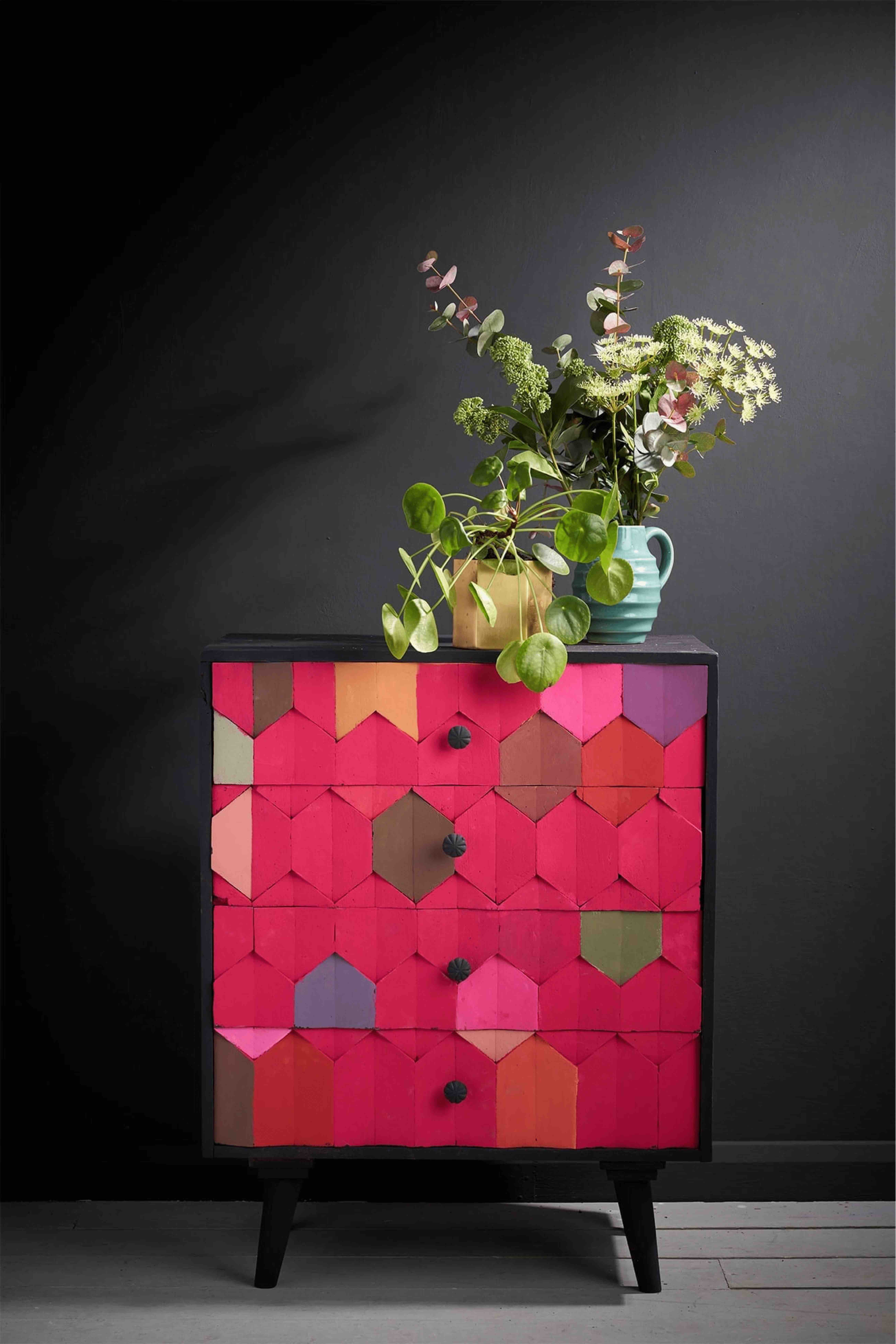As painted furniture ages, it starts to develop its own unique character. There’s a time and a place for the freshly-painted look of course, but if you want to create an authentic patina, you really don’t have to wait years for your paint work to age. Here’s a technique that can be done in an afternoon and requires very little kit – simply some Dark Chalk Paint™ Wax – to add bags of character to your painted project.
The secret? For a realistic vintage effect, you want to apply your paint liberally, moving the brush every which way, to create a textured finish. All those lovely brushstrokes will be emphasised by the Dark Chalk Paint™ Wax and help you achieve the most beautiful, natural aged look. If any areas are looking a little too dark, simply use some Clear Chalk Paint™ Wax like an eraser to knock the colour back.
Step by step guide to ageing paint work with Dark Chalk Paint™ Wax
- Paint your furniture using the Chalk Paint™ colour of your choice. Use a large Chalk Paint™ Brush, applying the paint every which way for a textured look.
- Once dry, paint a second, thinner coat to make sure every part of the piece is painted.
- Allow the paint to dry before applying a coat of Clear Chalk Paint™ Wax using a lint-free cloth or a Chalk Paint™ Wax Brush.
- Remove any excess wax with a lint-free cloth.
- While the Clear Wax is still wet, apply Dark Chalk Paint™ Wax with a Chalk Paint™ Wax Brush, working in small areas at a time. Apply liberally – it will appear very dark, but don’t worry, you will be able to knock this back.
- *TIP: If the Clear Wax has dried before you can work in the Dark Wax, you can always apply more.
- Using a clean lint-free cloth, wipe back the Dark Wax. You can wipe back as much as you want depending on the look you are going for. The Dark Wax should sit nicely in the brushstrokes you created with the paint. If you want to take even more off, you can use Clear Chalk Paint™ Wax as an eraser.
- Finally, once your Dark Wax has dried, ensure that the whole piece has had at least one coat of Clear Wax to seal in your finish.
- Allow the wax to cure (harden) before use. It will be touch dry within 24 hours, but will take up to 2 weeks to fully harden. You can use it during this time, but be gentle.
This aged effect is simple to achieve with Dark Chalk Paint™ Wax. But how about experimenting with some other wax colours? Follow the same steps with Black Chalk Paint™ Wax for a more industrial or warehouse look. Alternatively, take a look at Annie’s tutorial on using White Chalk Paint™ Wax for a coastal look. Adding wax to your next Chalk Paint™ project not only seals in the paint, but is also a wonderful way to alter the finish of your painted piece to achieve different effects.



